Large public squares are a common feature of many European town centres, and Trondheim is no exception. Torvet, Trondheim’s market square, has been a focal point of city life since the reconstruction that followed the great fire of 1681.
Today, following an extensive refurbishment, it is more popular than ever with city dwellers and tourists alike.
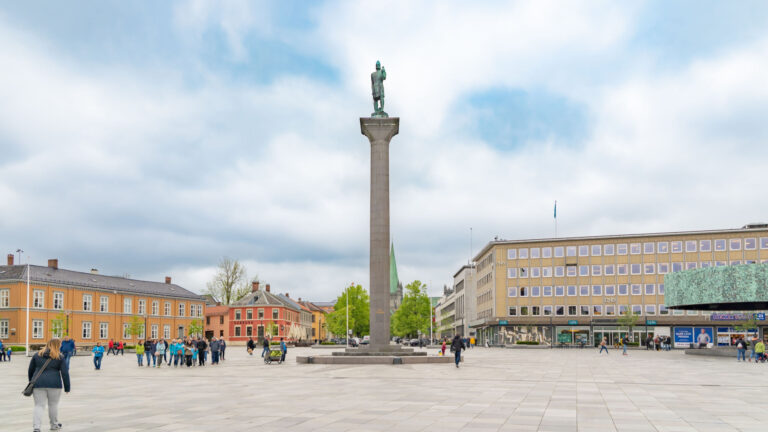
So if you’re planning a trip to Trondheim or just want to learn a bit more about one of the city’s main features, grab a hot drink and let us delve into the mysteries of Torvet: We'll cover its history, its secrets, and must-see details when visiting.
The new look of Trondheim’s market square
After an extensive process involving the municipality, architects, city planners and various stakeholders, a plan was set into motion in the mid-2010s to completely refurbish Trondheim’s central square.
The building work was carried out over a period of three years, from 2017 to 2020.
The changes that were made are relatively subtle and range from technical engineering solutions to better get rid of surface water to improvements making the space more usable by people.
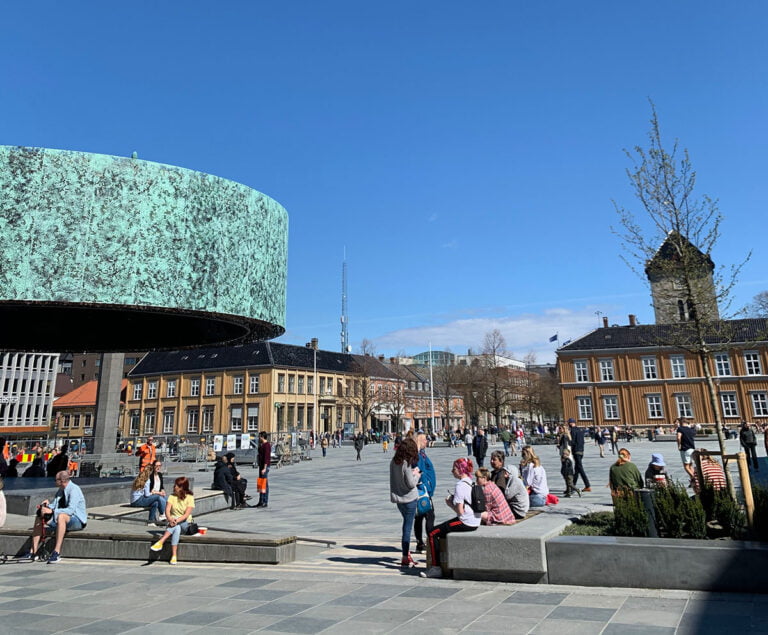
Several architectural and artistic details have also been added that pay homage to the city’s past.
From roundabout to large plaza
The most visible change made to Torvet was to establish a large plaza that is all on the same level. For many decades, the middle of Torvet was occupied by a roundabout.
Read more: The History of Trondheim
Though the area was largely off-limits for most vehicle traffic in recent years, the streets and kerbs were still there. This posed stumbling risks in an all-pedestrian landscape.
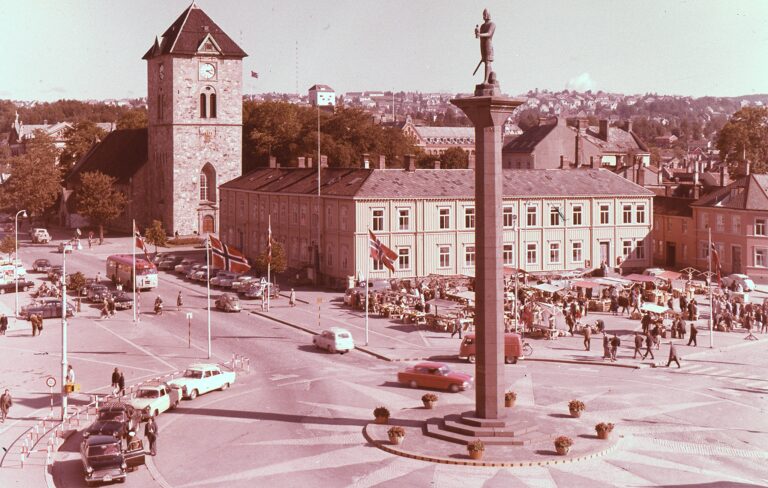
Another new detail that makes the area more pedestrian-friendly is the subsurface heating that ensures certain areas are free of snow and ice all year round without having to resort to salt and abrasives.
The result of the area being large and free of obstacles is that it is easier to use for events such as the Christmas market or the Trondheim food festival.
A usable public space
Another very visible change is the addition of furniture and other features making the area usable for people. This includes benches, tables and chairs, and raised planters that also double as benches.
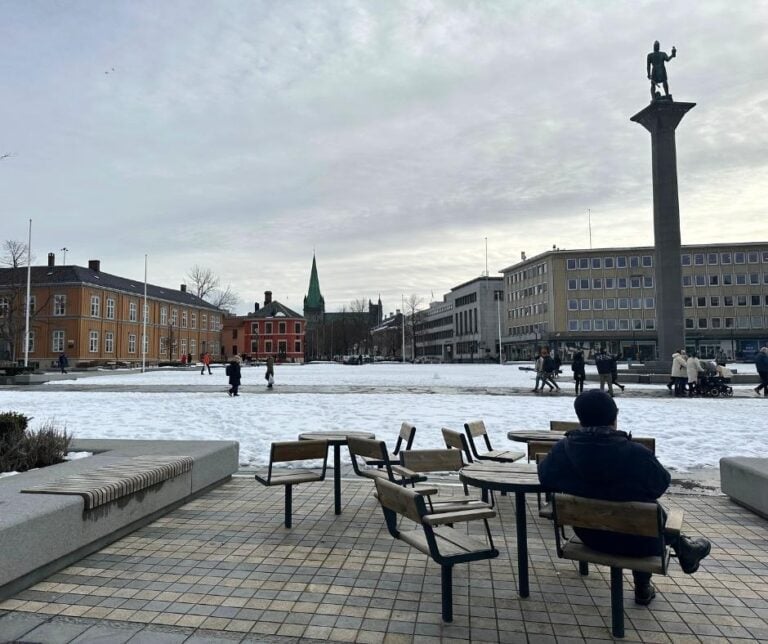
Most of the area is covered in square stone tiles, but the raised planters in the periphery of the plaza contain no less than 7000 plants and trees, which provide both shelter for wildlife and shade for people.
In short, when you walk through Torvet, it feels like a nice place to hang out. And people seem to have responded to the recent changes by hanging out there more than before.
This is a personal impression and not backed by hard statistics, which seem to show a dip in use of the area after the refurbishment.
The statistics should be taken with a pinch of salt though, since they are from 2020 and 2021, and those years are not representative since the pandemic massively changed people’s daily habits during that period.
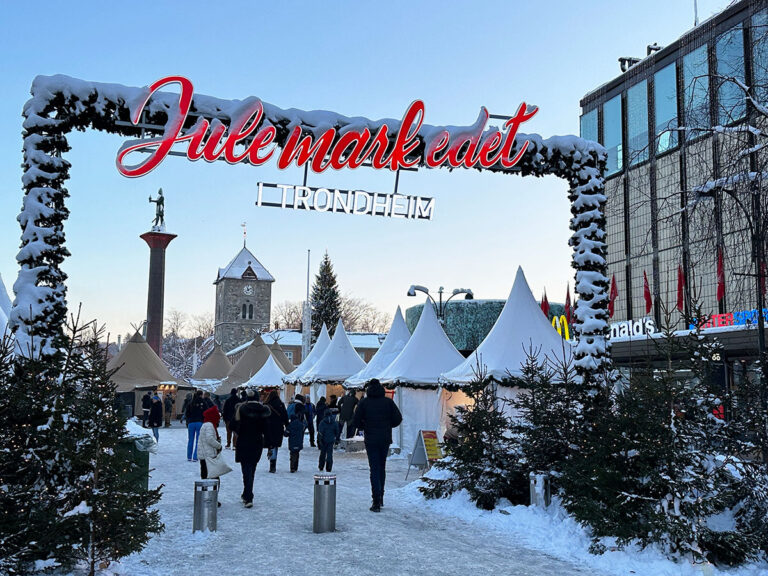
The fact of the matter is that now, post-pandemic, on a nice day, Torvet is evidently more crowded than it was in, say, 2016.
What to look for when visiting Torvet
The designers of Torvet included many interesting little details when refurbishing the area. Here is a list of the most notable ones.
Knitting patterns
The largest artistic feature of the new Torvet – but most difficult to see – is the pattern formed by the stone tiles covering the plaza. The light and dark tiles are arranged in such a way that from above, they are reminiscent of knitting patterns featuring traditional designs.
The effect is best observed by looking at drone shots, and cannot really be seen directly at ground level. That being said, some areas include patterns on a much smaller scale, with smaller tiles, and can be viewed from ground level.
Nidelven groove
The stone groove designed to drain away water from a public drinking fountain is shaped as Nidelven (the river Nid; Trondheim’s watercourse). The river is of huge historical significance for the city, and is one of the main reasons for a settlement to be established in the area in the first place.
Corner sculptures
Some of the 25 large granite raised planters of the plaza are decorated with corner sculptures chosen through a competition that took place in 2019. See if you can find the one that features Mario and Donkey Kong!
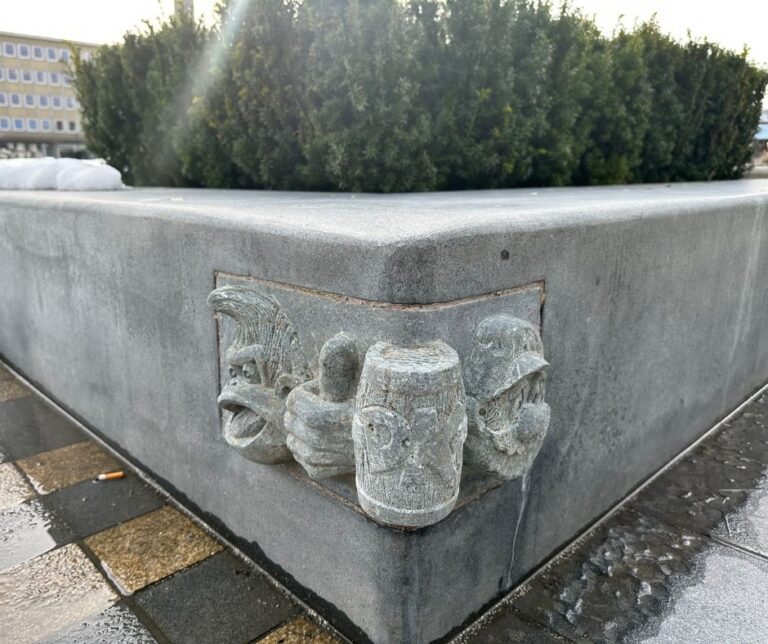
Permanent stage
An architecturally interesting permanent stage was built in 2014 and is a focal point for cultural events and public demonstrations.
The stage’s roof is decorated with several layers of perforated and patinated copper plates, hiding 3700 LEDs that light it up in changing colours.
Play fountains
The impossible-to-miss column supporting the statue of Olav Tryggvasson now features tiny fountains around its base. The fountains are lit by colour-changing LEDs at night and are very popular with children.
The fountains also echo the column’s other function as a sundial. Every hour, the fountains show the time by spraying the most water from the spouts that are closest to the pillar’s shadow.
Tree grates with a historical design
The plaza’s tree grates feature a design that was first seen on a little bronze buckle unearthed during the archaeological excavations of the area. The pattern is known as Borre style decorations and consists of interwoven bands.
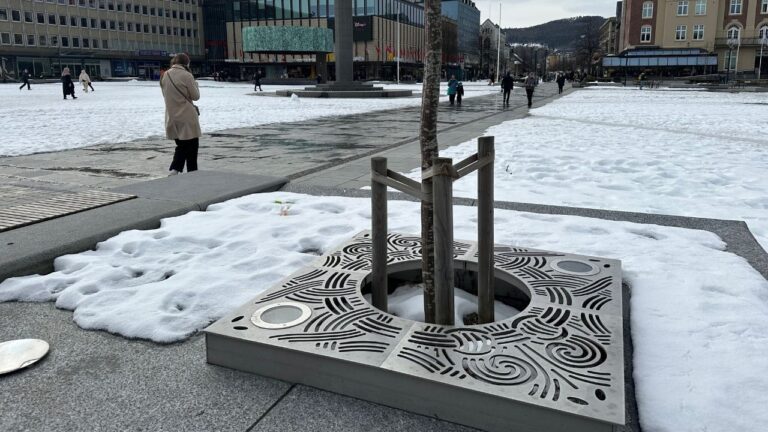
The bronze buckle is likely from the 10th century, at the height of the Viking Age. The designs evoke an animal, with eyes and horns.
The water music fountain
Another interesting piece is the water music fountain by artist Fritz Røed, located on the North side of the square. The work is actually from 1981, but found a new home on Torvet following the recent renovations.
The sculpture features fauns; half-human, half-goat mythological creatures appearing in Greek and Roman mythology. Water randomly trickling down the sides creates music like sounds.
Archaeological excavations
Before the square could undergo extensive refurbishments, what lies beneath it had to be examined by archaeologists to ensure nothing of historical value was lost or destroyed. The excavations took place from 2015 to 2017 and resulted in several interesting finds.
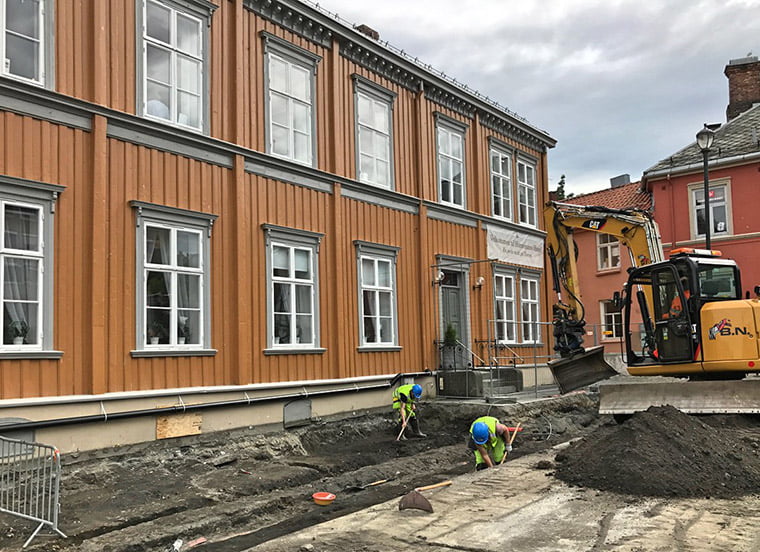
Aside from the previously mentioned bronze buckle, archaeologists have uncovered a very well-preserved floor that contains the foundations of a smith’s workshop. There are also finds that suggest that bakers, weavers and chefs lived in the area.
Several waste pits were found, and these contained a lot of animal bone and pottery from the 1700s and earlier. Of particular interest was the discovery of human remains in the Southeastern section of the square.
The evidence seems to suggest a boat burial dating from sometime around 500-800 CE. Archaeologists found a small bronze plate and part of a metal key in the immediate vicinity of the human remains.
Tell us what you think
Have you visited Trondheim’s main square in person? Do you like the idea of pedestrian-focused city squares or do you prefer car-dependent dystopia? Let us know in the comments!

